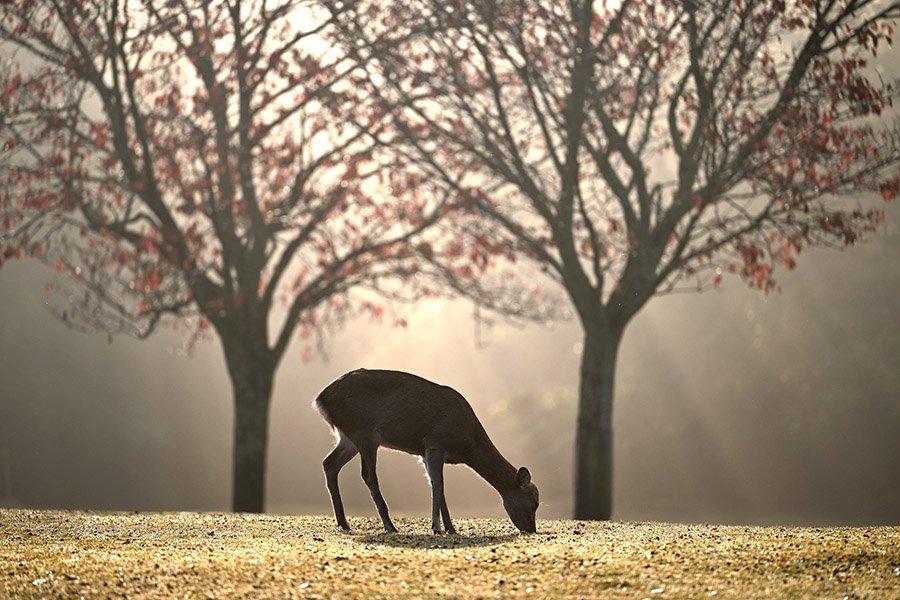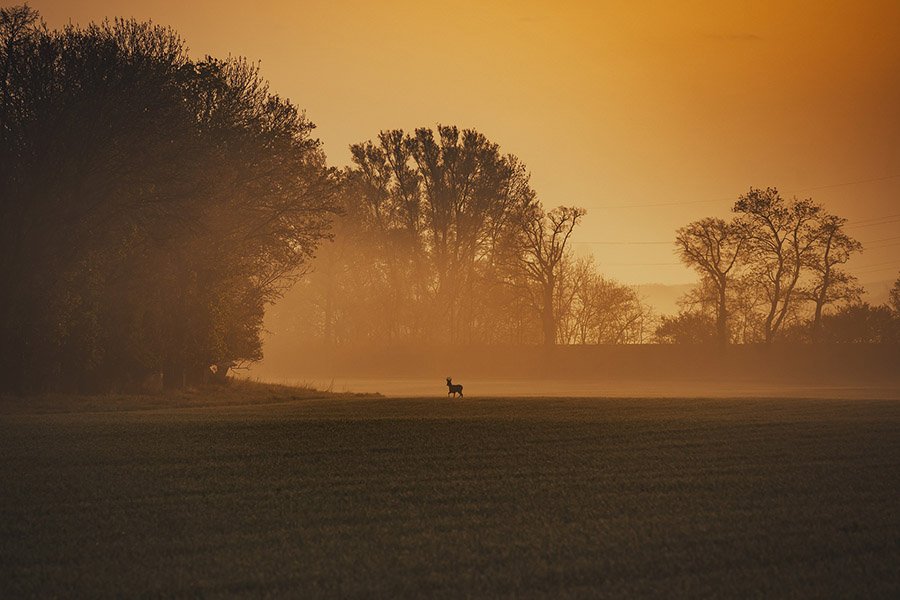Since deer are among the most preyed animals in the wild by various predators or hunted by humans, nature has equipped them with a complex adaptation tactic in terms of their behavior to enable them to increase their survival chances.
Regarding their active periods, most deer hunters refer to these mammals as nocturnal since they typically spot them during dark hours.
However, this article will highlight scientifically proven information and facts that will address the query of whether deer are nocturnal. I’ll also inform you when deer are most active and the best time to spot them.
Diurnal vs. Nocturnal vs. Crepuscular vs. Matutinal vs. Vespertine
These terms describe different behavioral patterns in animals, including humans, based on their activity levels during other times of the day. Here’s a brief explanation of each:
Diurnal
These mammals are most active during the daytime and sleep at night. Humans are generally considered diurnal animals, as we are most active during the day and sleep at night.
Nocturnal
They are most active at night and sleep during the day. Examples of nocturnal animals include owls, bats, and many species of rodents.
Crepuscular
Crepuscular animals are most active during the twilight hours of dawn and dusk. Examples of crepuscular animals include deer, rabbits, and some species of primates.
Matutinal
These animals are most active in the early morning, usually around sunrise. Examples of matutinal animals include songbirds and some species of primates.
Vespertine
They are most active during the evening hours, usually around sunset. Examples of vespertine animals include moths, fireflies, and some species of bats.

In Summary
It’s important to note that while these terms are helpful for categorizing animal behavior, there can be variation within species and individuals.
Some animals (like deer) may exhibit a combination of these behaviors or switch their activity patterns based on environmental factors such as temperature, food availability, and predation risk.
Are Deer Nocturnal or Crepuscular?
Deer are crepuscular, meaning they are most active during dawn and dusk. These times of day offer the best combination of light and temperature conditions for them to move around, feed, and socialize/mate.
Although they are primarily crepuscular, their activity patterns can vary depending on factors such as season, food availability, and predator activity.
For instance, deer can be active during the day and occasionally at night, particularly in areas with low human disturbance.
Also read: What Are Deer Antlers Made of? What’s The Difference With Horns?

When Are Deer Most Active?
Deer are most active during dawn and dusk, which is also known as crepuscular activity. These mammals are primarily herbivores and tend to forage for food during these low-light periods, which can provide some cover from predators.
It is important to note that the exact times of day when deer are most active can vary depending on the season, weather conditions, and their particular habitat.
For example, during the summer, when temperatures are high, deer may be more active at night when it is cooler. On the other hand, when food is scarce during the winter months, they may need to be functional for extended periods during the day to find enough food.
However, deer often rest and seek shelter from the heat and sun during the day when they are in a safe and conducive habitat. They may feed or move around during the late hours of the night, but they are generally active during their peak hours of dawn and dusk.
What Factors Influence Deer Active/Sleeping Patterns?
Deer are primarily crepuscular, but they can also be active at other times depending on various factors. Some of the factors that can influence deer’s active/sleeping patterns include:
Food Availability
Deer are herbivores and require a constant supply of food to survive. When food is scarce, they may become more active during the day as they search for food.
Predation Risk
Since deer are prey animals, they are constantly on the lookout for predators. If they perceive a higher predation risk, they may be more active at night when most predators, like bears and humans, are less active.

Habitat
The type of habitat in which deer live can also influence their activity patterns. For example, deer living in areas with heavy human activity may become more nocturnal to avoid contact with humans.
Breeding Season
During the breeding season, deer may be more active at all hours of the day as they search for a mate.
Weather Conditions and Temperature
Weather conditions like rain or snow can also influence deer activity patterns. During inclement/bad weather, deer may be more active during the day to avoid exposure to the elements (heavy rain, storm, or strong winds).
Deer also prefer cooler temperatures, and during the summer months, they may be more active during the early morning and late evening hours to avoid the day time scorching sun.
Final Thoughts
In summary, most deer species are crepuscular, meaning they are often active at the twilight hours of dawn and dusk. During these times, their keen senses of sight, smell, and hearing allow them to detect potential predators and evade them more effectively.
However, it’s worth noting that the exact times of day when deer are most active can vary based on factors such as the season, weather conditions, and local predator populations.
In general, if you want to spot deer in the wild, your best bet is to go out in the early morning or late afternoon. And remember that you should not touch a fawn if you find one.


